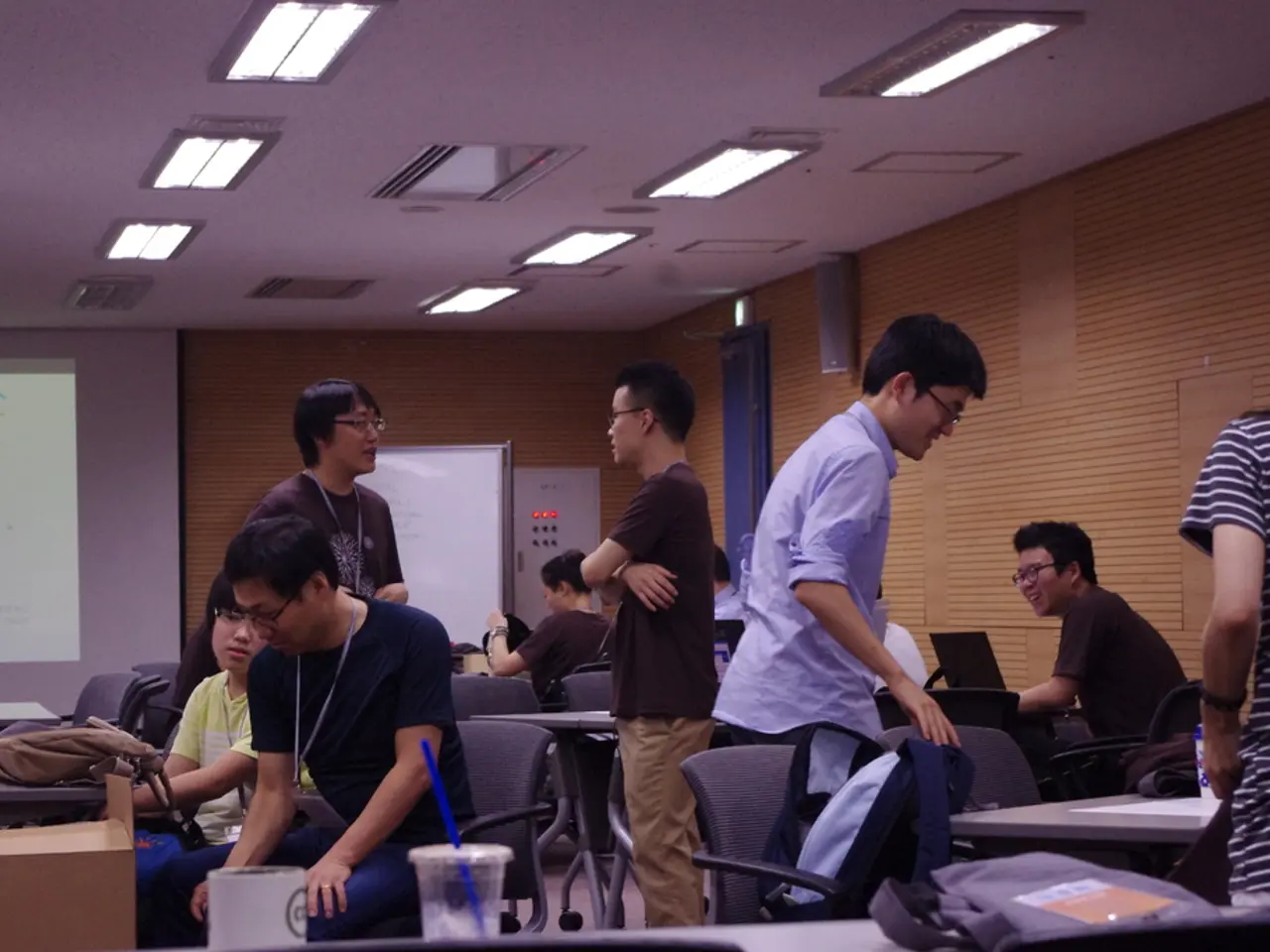Variations in Defining Contentment: The Importance of Multiple Perspectives on Joy
In the pursuit of understanding happiness, a complex and multifaceted concept, we delve into various interpretations across different disciplines and cultures.
Culturally, happiness can vary significantly. For example, in some societies, happiness is deeply intertwined with family and community, whereas in others, it leans more towards individualism [1]. Societal values play a crucial role in shaping the perception of happiness, with some cultures emphasizing material wealth, while others prioritise personal fulfillment [3].
Philosophers have long pondered the nature of happiness. Aristotle proposed four levels of happiness, ranging from hedonistic pleasures to eudaimonic fulfillment, which involves living a virtuous life [5]. Eudaimonic happiness and hedonic happiness are often distinguished, with the former focusing on living a meaningful life, and the latter centring on pleasure and the avoidance of pain [1]. Stoics consider virtue the sole source of happiness, viewing it as self-sufficient and immune to external influences. On the other hand, Epicurus explained happiness as pleasure but emphasised that not all pleasures are equal, favouring simple pleasures and a modest life [6].
Economically, the relationship between wealth and happiness is not straightforward. The Easterlin Paradox suggests that economic growth does not necessarily lead to increased happiness beyond a certain point, as observed in countries like Japan and the U.S. [3]. Inequality can also negatively impact happiness, as individuals often evaluate their happiness relative to others [4].
Psychologically, happiness is often measured as subjective well-being, which includes life satisfaction and emotional well-being. The Hedonic Treadmill theory posits that people quickly adapt to changes in their circumstances, leading to a return to a baseline level of happiness despite changes in wealth or life events [2]. Self-efficacy and a sense of control can significantly influence happiness, even in challenging environments [1].
To cultivate happiness, one can practice cultural and philosophical openness, reflect on the sources of happiness in their life, and map their happiness journey by making an activities log, assessing and improving their current life, designing a schedule, and executing the schedule. The Happiness Science Labs offers courses, certifications, podcasts, videos, and other tools based on the research of the Institute for Life Management Science.
A study examining the global definition of happiness found that 24 of the 30 countries analysed defined happiness as being associated with good luck and favourable external conditions. However, people who view happiness as an internal and achievable feeling tend to be happier than this group [7]. The presence of a fortune-based definition of happiness was linked to the nation's distance from the equator, specifically to the countries farther from the equator [8].
In conclusion, happiness is a multidimensional concept influenced by cultural, philosophical, economic, and psychological factors. It is a journey of self-discovery, self-improvement, and the pursuit of a meaningful life. Understanding these various interpretations can help us better navigate our path towards happiness.
[1] Diener, E., Suh, E. M., Lucas, R. E., & Smith, H. L. (1999). Subjective well-being: Three decades of progress. Psychological Bulletin, 125(2), 87–118. [2] Lyubomirsky, S. (2008). The How of Happiness: A Scientific Approach to Getting the Life You Want. Penguin. [3] Easterlin, R. A. (1974). Does Economic Growth Improve the Human Lot? Some Empirical Evidence. In NBER Macroeconomics Annual (Vol. 4, pp. 197–220). University of Chicago Press. [4] Wilkinson, R., & Pickett, K. (2009). The Spirit Level: Why More Equal Societies Almost Always Do Better. Bloomsbury Publishing. [5] Aristotle. (1985). Nicomachean Ethics. Hackett Publishing. [6] Epicurus. (2008). Letters to Herodotus. Hackett Publishing. [7] Diener, E., Suh, E. M., Lucas, R. E., & Smith, H. L. (1999). Subjective well-being: Three decades of progress. Psychological Bulletin, 125(2), 87–118. [8] Inglehart, R., & Klingemann, H.-D. (2000). Cultural Foundations of Well-Being: The Role of Religiosity, Secular-Rationalism, and Survival Values in 56 Societies. World Values Survey Association.
- In some cultures, happiness is deeply rooted in family and community, while others prioritize individualism, showcasing the multifaceted nature of happiness across cultures.
- Eudaimonic happiness, which focuses on living a meaningful life, and hedonic happiness, centering on pleasure and the avoidance of pain, are two distinct interpretations of happiness proposed by philosophers.
- Economically, the relationship between wealth and happiness is complex, as observed by the Easterlin Paradox, suggesting that increased wealth beyond a certain point may not guarantee greater happiness.
- To cultivate personal growth and happiness, individuals can practice cultural and philosophical openness, reflect on the sources of happiness in their life, and utilize resources such as the Happiness Science Labs for guidance in managing their lifestyle, including food-and-drink, fashion-and-beauty, education-and-self-development, and relationships.




